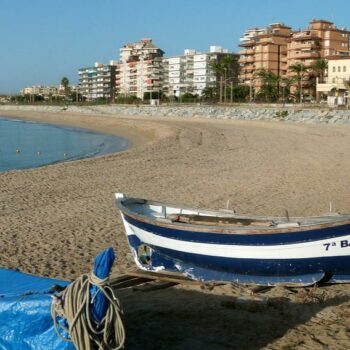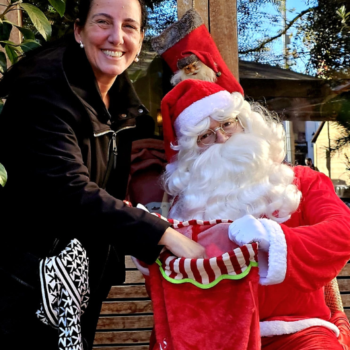

The most romantic day of the year is arriving! February 14th has become a signal of love and, in some countries, also of friendship.
This special date allows couples and friends to exchange special treats with gifts, outings and other surprises that help to strengthen the bonds of their relationships.
However, this was not always the case…
While celebrating Valentine’s Day in Spain has become more commercial and couple-focused over time, this celebration has a slightly different origin. Also, it varies slightly in Spanish-speaking countries.
As we know that you are interested in learning Spanish, we will specifically guide you through the details of this festivity within Spain and Latin America. You will learn about its origins and its various celebrations.
Plus, we’ll give you some new vocabulary related to this special day and… an exclusive discount!
Grab a pencil and paper, and celebrate this February 14th in style with Spanish Express.
The Origin of Valentine’s Day

This holiday has a rather unusual creation, dating back to 3rd century Rome. During this historical period, the priest “Valentine” was engaged in marrying young lovers on the sly, in what could be seen as an early celebration of “Feliz día del amor.”
The ceremonies were secret, as they were forbidden by Emperor Claudius II, who claimed that unmarried young men were more useful in war as they lacked sentimental ties.
The priest decided to flout the orders and continued to perform the marriages. Eventually, the inevitable happened, and Claudius II found out about the ceremonies. Seeing that his command was not taken seriously, the Emperor ordered the death of Priest Valentinus.
The sentence was dated February 14th, year 270. For this reason, the day was taken to honor the man who would now be remembered as Saint Valentine, for defying the law in the name of love.
While this is not Valentine’s Day’s only circulating origin story, as even the Greeks have a myth about St. Valentine (who is depicted as Eros), it is this one that tends to be the most recurrent when discussing its origin.
However, it was not until the 19th century that Anglo-Saxon countries began to take this day into account, marking the beginnings of what in the Spanish-speaking world would be embraced as “Día de San Valentín.” It is recorded that on February 14th they began to make it common for couples of the time to give each other letters and flowers.
In the 20th century, the tradition exploded, and thanks to Esther A. Howland, the mass marketing of gift cards with romantic themes began. This American was the driving force behind the custom, which eventually spread around the world and it became the wonderful holiday we know today.
February 14th in Hispanic countries
Latin America
In most Latin American countries, such as Venezuela, Argentina, Cuba, Dominican Republic, and Ecuador, this celebration is usually called Día del Amor y la Amistad (Day of Love and Friendship) in addition to Valentine’s Day, embodying the sentiment of “Te amo/quiero mucho.”
The festivity, although it has its origins in the couple’s love, has been extended to friendships, which is why in these countries it is common to give a gift to close friends during “Semana de la dulzura,” a period that celebrates affection in a similar spirit.
It is also common to play amigo secreto (secret friend), where several friends agree to participate. Each friend writes his or her name on a piece of paper, then these papers are put in a bowl and each person takes a piece of paper at random. It is not possible to reveal who has been given to whom, and the secret is revealed on the day the gift is given.
As for couples, the most common activities are to have romantic dinner in a restaurant, give flowers, chocolates, and teddy bears. Some people take advantage of the holiday to take a romantic trip and escape their usual routines.
In Colombia, Bolivia, and Uruguay, February 14th is not generally celebrated, as they instead enjoy similar festivities between September and October.
Spain
In Spain, things are slightly different. Although some parts of the country traditionally celebrate February 14th with flowers, chocolates and so on, in Aragon and Catalonia they wait until 23 April… and it’s well worth the wait.
These regions of Spain instead celebrate the Day of Love and Friendship in the name of Sant Jordi (Saint George), a tradition since 1094.
According to the legend, it was Sant Jordi who saved an important princess from the clutches of a dragon that was stalking the village. The knight cut off the head of the beast, and from its blood, a red rose was born, which he took and presented to the princess.
So, on this day, men give roses to their partners or friends, while women give a book in exchange.
Without a doubt, this celebration is the most romantic one around. To experience this unique part of Spain’s culture, people from all over the world join small Spain group tours to see the day of love for themselves.
These small group tours are really exciting for anyone who loves to travel without spending a lot of money and enjoys being around other people on their excursions. Through various activities and participating in rich festival ceremonies, you enjoy the true culture of Spain.
Spanish Vocabulary on Valentine’s Day
Spanish Phrases (Frases en español) English Meaning (Significado en inglés)
Te amo – I love you
Te quiero – I love you / I want you
Eres mi todo – You are my everything
Sin ti, mi vida no tiene sentido – Without you, my life is meaningless
Eres el amor de mi vida – You are the love of my life
No puedo vivir sin ti – I can’t live without you
Mi corazón es tuyo – My heart is yours
Te pienso todo el tiempo – I think about you all the time
Siempre estás en mi mente – You’re always on my mind
Eres mi alma gemela – You are my soulmate
Quiero pasar el resto de mi vida contigo – I want to spend the rest of my life with you
Te necesito más que nunca – I need you more than ever
Te echo de menos – I miss you
Cada día te quiero más – Every day I love you more
Eres mi sueño hecho realidad – You are my dream come true
Te adoro – I adore you
Estoy loco/a por ti – I’m crazy about you
Mi amor por ti es eterno – My love for you is eternal
Eres mi razón de ser – You are my reason for being
Juntos por siempre – Together forever
Celebrate Valentine’s Day with Spanish Express!
If you want to experience the celebration of Valentine’s Day, then come and visit us in Spain!
Luckily for you, we have spaces available for our Spanish Homestay Immersion Programme (SHIP); a unique opportunity to combine fun and learning and the most effective way to learn Spanish.

This program offers beautiful destinations within Spain to choose from to start your journey in learning Spanish in the company of your special person.
You can live and study in your teacher’s home, and be guided by a Spanish-speaking expert throughout their hometowns in Barcelona, Valencia, Cádiz or Burgos amongst others!
Do Spanish celebrate Valentine’s Day?
Yes, Spanish people do celebrate Valentine’s Day. It’s a day for expressing love and affection with gifts like flowers and chocolates, known in Spanish as “Día de los enamorados” or “Día de San Valentín.”
What is the Spanish name for Valentine’s Day?
The Spanish name for Valentine’s Day is “Día de San Valentín.” It’s a day dedicated to love and friendship, celebrated with romantic gestures and gifts.
How do the Latinos celebrate Valentine’s Day?
Latinos celebrate Valentine’s Day with a lot of love and enthusiasm, known as “Día del Amor y la Amistad.” They exchange gifts, such as “ramo de flores” and chocolates, and enjoy romantic dinners. It’s also common to express affection with “Feliz Día de San Valentín” to both partners and friends.
What do Spanish people call Valentine’s Day?
In Spain, Valentine’s Day is commonly referred to as “Día de San Valentín.” However, it’s also known as “Día del Amor y la Amistad” in some Spanish-speaking countries, highlighting both romantic and platonic love.
What are 3 Spanish names for Valentine’s Day?
Three Spanish names for Valentine’s Day are “Día de San Valentín,” “Día del Amor y la Amistad,” and “Día de los Enamorados.” Each name reflects the celebration’s spirit of love and friendship in the Spanish-speaking world.
Do the Spanish celebrate Valentine’s Day?
Yes, the Spanish celebrate Valentine’s Day, or “Día de San Valentín,” with traditional gestures of love. It’s common to give flowers, chocolates, and to dine out. The day is embraced with joy, marking it as a special occasion for lovers and friends alike.









